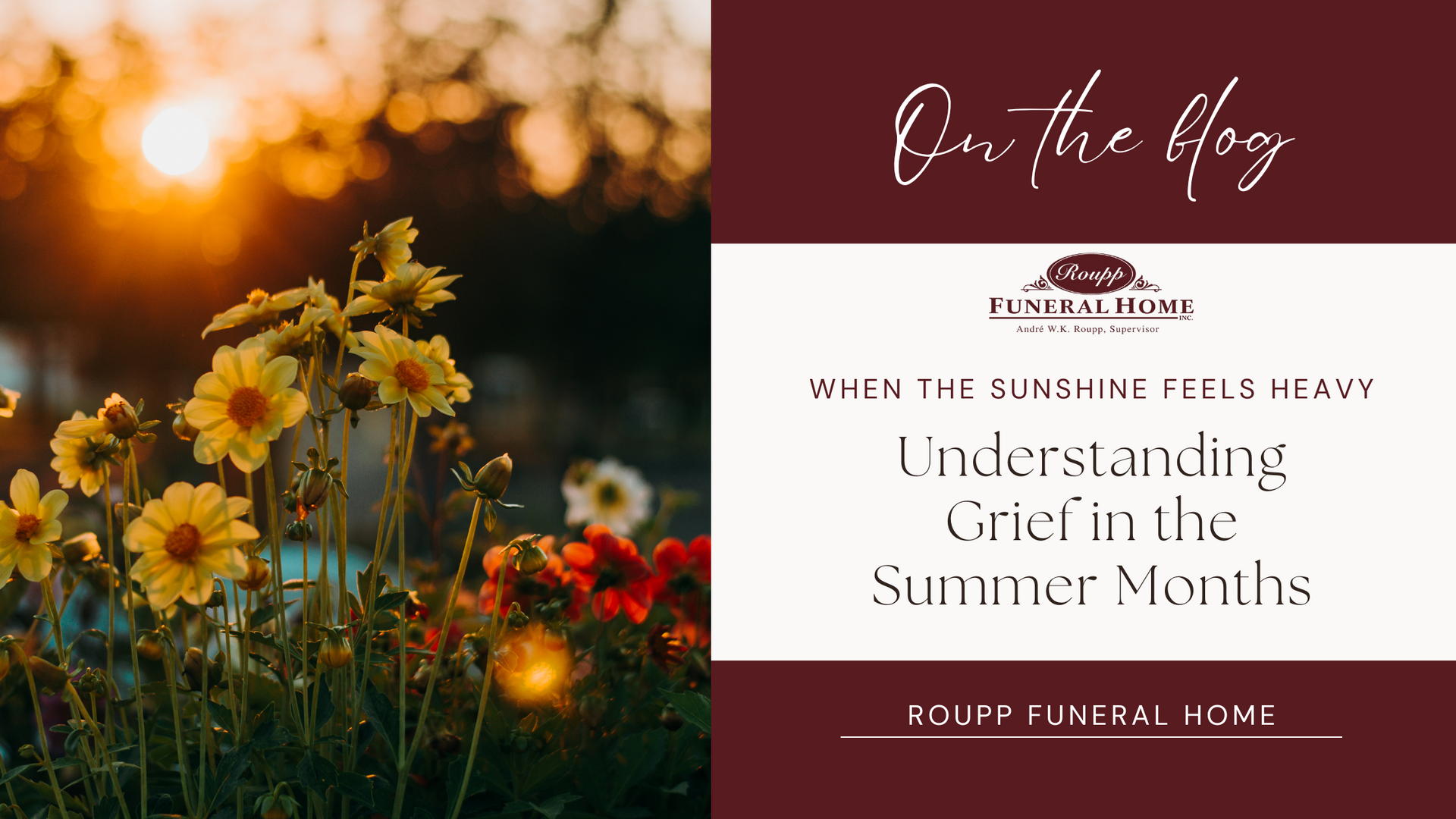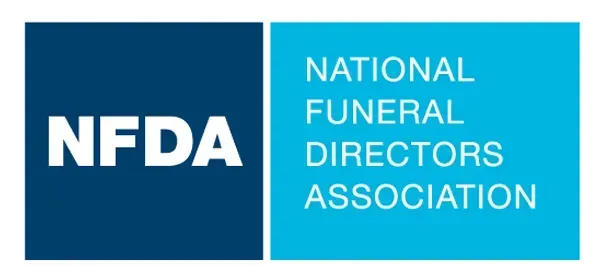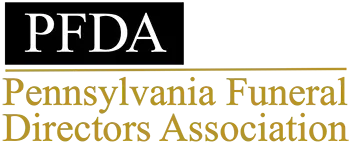Roupp Funeral Home Blog
Keep up with the latest news, events, and information from Roupp Funeral Home here at our blog.
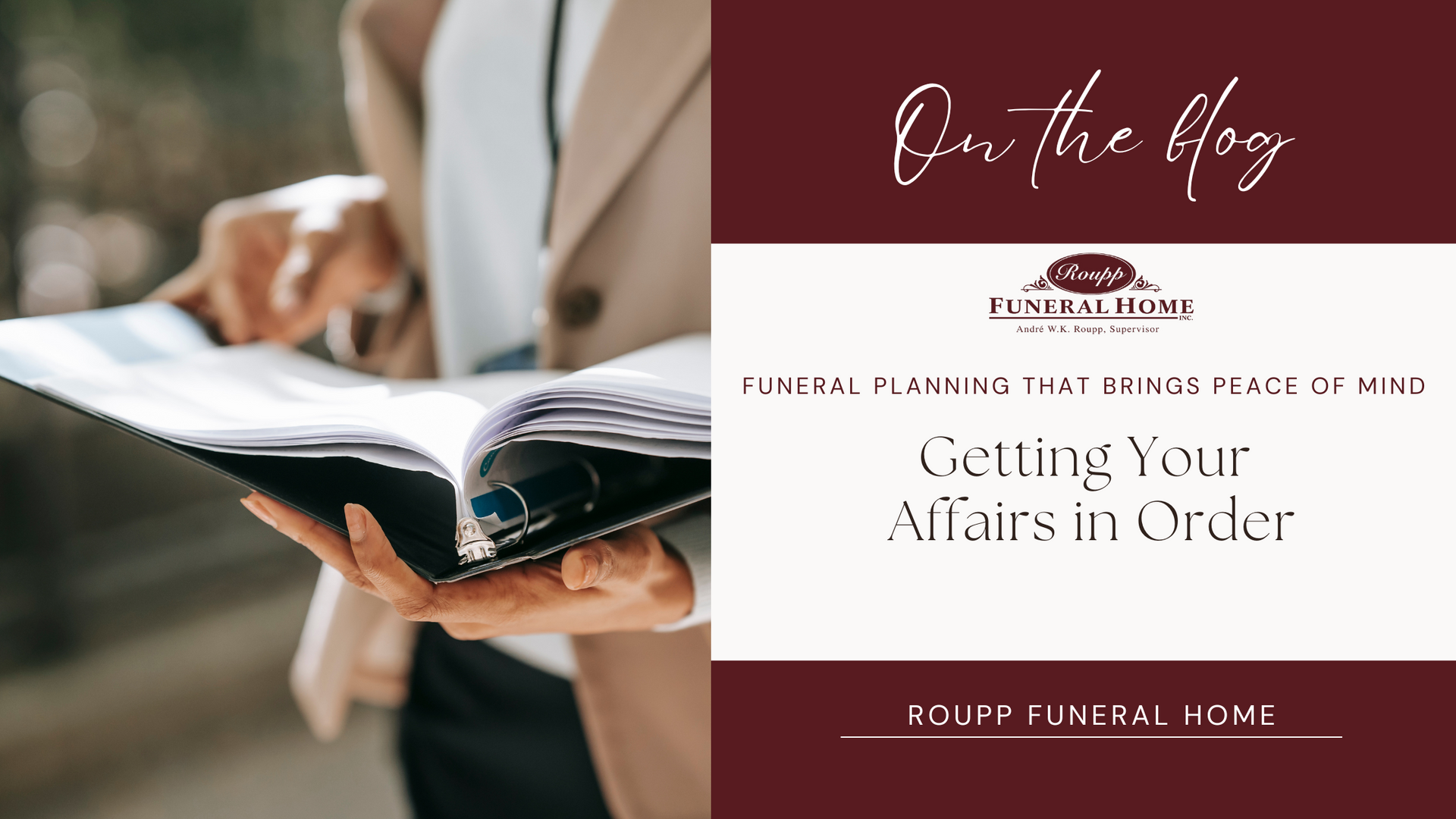
At Roupp Funeral Home, we often meet families during the most difficult moments of their lives. Moments that can be made significantly more manageable when their loved one has taken the time to get their affairs in order. Planning ahead, both legally and personally, isn’t just about paperwork; it’s a powerful act of love, responsibility, and clarity. If you’ve been thinking about getting your affairs in order, now is the time to take that important step. This blog post will walk you through what it really means to prepare legally, financially, and emotionally for the future. Why Getting Affairs In Order Matters Grief is hard enough without having to untangle legal documents, search for missing information, or make difficult decisions without guidance. When you have your affairs in order, you lift a huge burden from your family and give them the gift of clarity and peace during a time of sorrow. Getting your affairs in order helps you: Ensure your wishes are carried out the way you intend Protect your assets and legacy Prevent unnecessary stress and conflict among family members Provide a smoother, more meaningful funeral process Save time, money, and heartache later Start with the Legal Essentials Working with a trusted estate planning attorney is a smart first step. Here are the most important legal documents to have in place: 1. Will or Trust A will outlines how your property and assets will be distributed after your death. A trust can offer additional privacy and avoid probate, depending on your needs. 2. Power of Attorney This document designates someone you trust to make legal and financial decisions on your behalf if you’re unable to do so. 3. Advance Healthcare Directive (Living Will) This outlines your medical care preferences in case you are ever unable to speak for yourself, and names a healthcare proxy to carry out those wishes. 4. Beneficiary Designations Make sure your life insurance policies, retirement accounts, and other assets have updated beneficiaries. These can often override what’s in a will, so it’s important to review them regularly. 5. Document Organizer or Folder Keep copies of all these documents in one safe, accessible location, and make sure your family or legal representative knows where to find them. Next: Funeral Pre-Planning Once the legal side is in place, we encourage families to think about pre-planning their funeral arrangements. This ensures your personal wishes are honored and removes guesswork from your loved ones. At Roupp Funeral Home, we guide families through: • Type of Service Do you prefer a traditional funeral, a memorial service, or a simple gathering? Would you like a burial, cremation, or another type of final disposition? We help you put these preferences on paper. • Details That Matter From the music you’d like played to the readings or speakers you envision, these are the touches that create a meaningful and personalized tribute. • Financial Planning We offer affordable pre-payment options that lock in today’s prices and relieve your family of financial responsibility down the road. • Vital Information Collection We help you gather important details that will be needed at the time of passing such as your full legal name, Social Security number, military service history, and obituary preferences. When your legal documents and funeral arrangements are thoughtfully prepared, your affairs are truly in order. We recommend: Storing all documents in a fireproof box or secure folder Informing key family members or your attorney where to find everything Updating your plans as life circumstances change (marriage, divorce, new grandchildren, moving, etc.) Checking in with us every few years. We’re here to keep your file current We're Here to Help Every Step of the Way At Roupp Funeral Home, we believe that planning ahead is one of the most caring things you can do for your family. Whether you’re just getting started or looking to update your existing plans, we’re here with support, guidance, and respect for your wishes. Getting your affairs in order doesn’t have to be overwhelming. We’re happy to connect you with local estate planning attorneys we trust, and we’ll walk with you through every aspect of pre-planning your funeral. If you have questions or would like to schedule a no-obligation consultation, please contact us today. We’re honored to serve you and your family with dignity, compassion, and care.

Losing someone you love is never easy, and standing before others to speak in their honor can feel overwhelming. At Roupp Funeral Home, we understand that beginning a eulogy in the wake of grief can both tremble the heart and soothe the soul. A heartfelt eulogy offers comfort to the speaker and to everyone gathered by capturing who your loved one truly was. In this post, we’re sharing a few of our top tips for how to write a eulogy with heart. 1. Pause, Reflect, Let Memories Speak Find a quiet moment, perhaps in a favorite chair, with a comforting drink to reflect on the person who has passed. Ask yourself: What made them laugh? What small gestures revealed their kindness? Which memories shimmer brightest in your mind? Let the answers guide your thoughts. Writing down even the simplest recollection can become unexpectedly powerful. 2. Build a Simple, Gentle Structure A clear format helps you speak with both confidence and compassion: Introduce yourself — say who you are and how you knew them. Share life highlights — touch on background, passions, and relationships. Tell personal stories — offer moments that reveal personality. Close with love — leave everyone with a heartfelt farewell, quote, or blessing. 3. Focus on Qualities That Defined Them Maybe they had a signature kind of humor, a constant generosity, or quiet strength: Humor : “Every time they walked into the room, laughter followed like the time they…” Kindness : “They never missed an opportunity to help, whether it was mowing a neighbor’s lawn or offering a listening ear.” Specific stories paint a portrait far richer than broad descriptions ever could. 4. Share a Favorite Memory, Even a Small One Personal stories invite others into your experience. They build connection and warmth: “I’ll never forget the time…” Whether it’s a humorous mishap or a quiet act of love, these stories are the heartbeats of the eulogy. 5. Speak from the Heart, in Your Own Voice You don’t need to be polished because authenticity matters more. It’s okay to show emotion, or even to pause. Embracing vulnerability resonates deeply with everyone listening. 6. Honor Their Legacy Reflect on how their influence lives on. Did they teach generosity, a steadfast work ethic, or joy in simple pleasures? “Though they’re not physically here, their spirit lives on in every Sunday meal we share, every favor passed forward, every smile we give to someone in need.” 7. Consider a Meaningful Quote or Poem Sometimes a line from poetry, scripture, or a trusted author can beautifully close your tribute: “As Maya Angelou wrote, ‘People will forget what you said… but never how you made them feel.’ That truly was [Name].” 8. Practice, Then Trust Yourself Read your eulogy aloud several times to find your natural flow. Bring a printed copy with you, it’s okay to read. This isn’t your high school English class when you couldn’t have notes in front of you. Notes are encouraged to help you stay on track. Your words matter more than perfect delivery. 9. Keep It Respectful, Hopeful, and Timely Aim for about 5–10 minutes, a length that honors without overwhelming. Focus on positive, uplifting memories. If your relationship was complex, steer toward gratitude and compassion. 10. Let It Be a Healing Gift Writing a eulogy isn’t just sharing memories, it’s part of healing. It can be a profound way to say goodbye, express gratitude, and offer comfort to all who loved them. Writing a eulogy is a courageous act of love. By taking moments to reflect sincerely, structure your thoughts gently, and speak with your heart, you create a tribute that not only honors your loved one but also offers solace to those who share in the loss. If you ever feel uncertain or need guidance, whether it's choosing a meaningful reading or finding the right tone, know that the Roupp family is here for you. We’re honored to help you celebrate a life well-lived and to hold space for your words, your memories, and your grief.
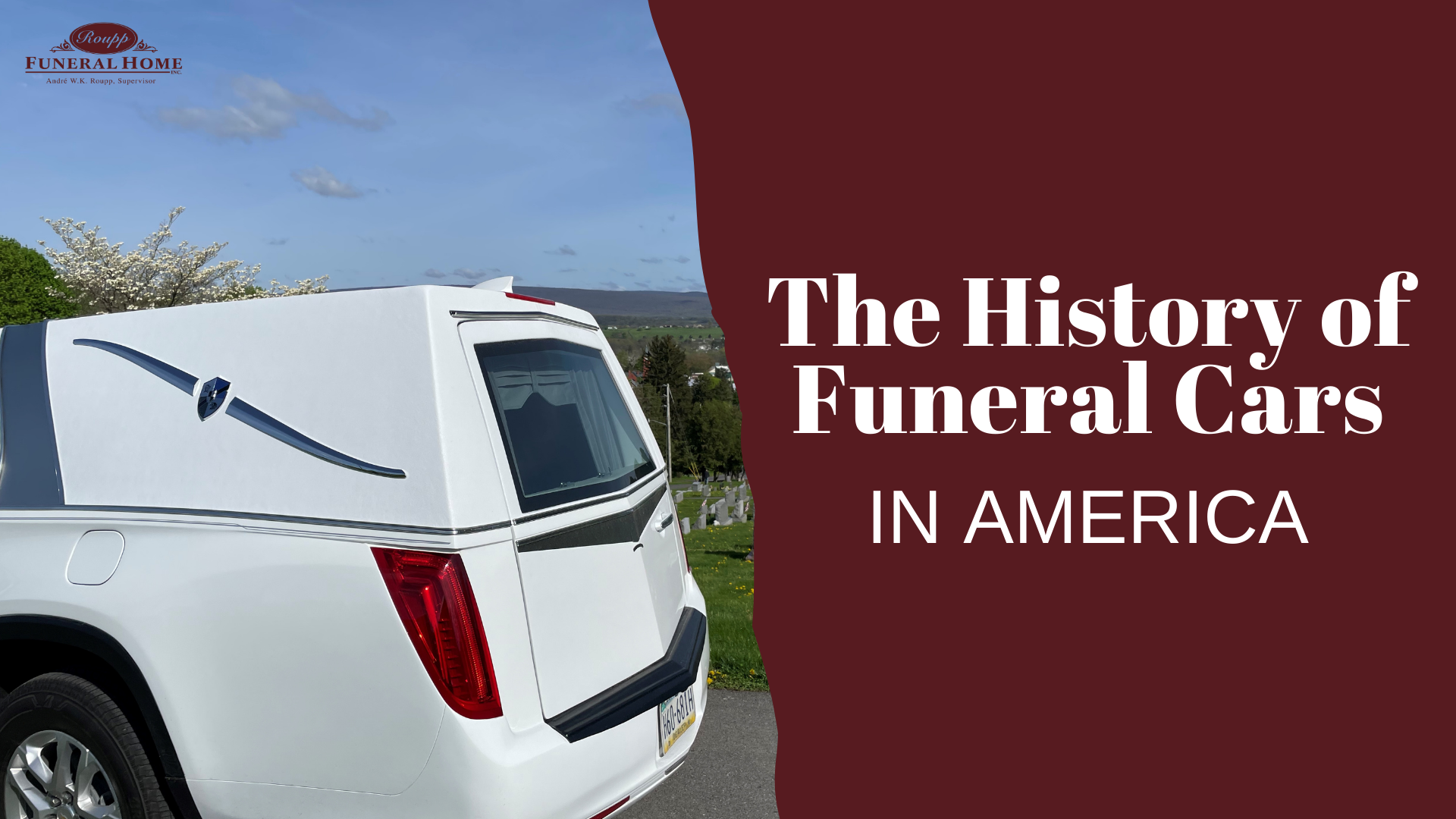
When we honor a loved one’s life, every detail matters, including their final ride. The vehicles we use to carry the deceased, known as funeral cars or hearses, have evolved significantly over the past century. These somber yet dignified vehicles are not only functional, they are steeped in history, tradition, and symbolism. A Brief History of Funeral Cars in America The earliest funeral processions in America were entirely on foot or involved simple horse-drawn wagons. As communities grew and became more mobile, these wagons evolved into more formal carriages specifically designated to carry caskets. These horse-drawn hearses, often ornately carved and painted black, featured glass windows to display the casket and were drawn by black horses draped in matching plumes.
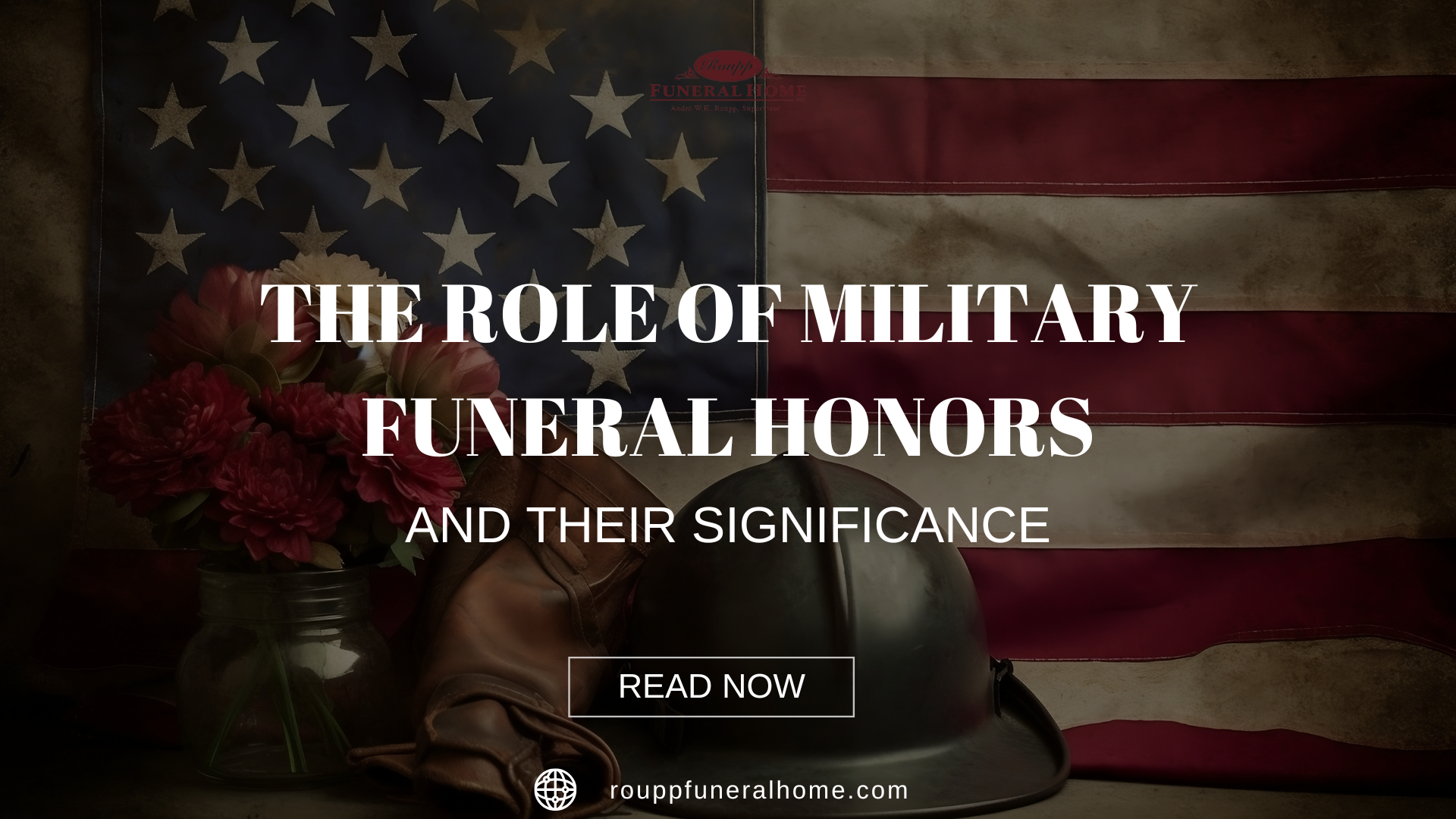
As Memorial Day approaches, we reflect on the sacrifices made by those who have served in the military. This holiday is a time of remembrance, not only for those who gave their lives but also for the traditions and rituals that honor their bravery and sacrifice. Among these rituals, military funeral honors stand as a profound symbol of respect, gratitude, and the deep debt of a nation to its fallen heroes. Military funeral honors are a sacred tradition, an essential part of the process for those who served in the armed forces and made the ultimate sacrifice. These honors are performed to commemorate the lives of veterans, especially those who have passed in service to their country, and their deep significance cannot be understated. On Memorial Day, as we gather to honor the fallen, these rituals take on even greater importance, reminding us of the respect we owe to those who defended our freedoms. Here are the key elements of military funeral honors and their deeper meaning: 1. The Folding of the American Flag One of the most important moments in a military funeral is the folding of the American flag. As the flag is carefully and methodically folded into a triangle, it symbolizes the nation’s gratitude for the service member’s sacrifice. Each fold carries a specific meaning, representing values such as life, liberty, and the pursuit of happiness. The final triangle shape of the flag symbolizes the Triune God—Father, Son, and Holy Spirit—and the nation's dedication to preserving freedom. The flag is then presented to the deceased's next of kin, often a spouse or child, as a symbol of respect, gratitude, and honor. The folding of the flag is a somber, powerful gesture that not only recognizes the service member’s sacrifice but also offers comfort to the grieving family, providing a tangible symbol of their loved one’s patriotism and bravery. 2. The 21-Gun Salute The 21-gun salute is a deeply respectful tribute, representing the highest honor a nation can offer its fallen soldiers. The tradition of the 21-gun salute dates back centuries and is rooted in the practice of firing cannons to indicate a sign of peace, symbolizing the end of conflict. Today, this ritual is reserved for honoring the deceased veteran and is performed by a military firing squad at the funeral or memorial service. Each shot in the salute symbolizes the nation’s deep respect and gratitude for the deceased. The firing of the 21-gun salute serves as both a powerful tribute to the fallen and a poignant reminder to the family and community of the service member’s unwavering dedication to duty. The echo of each shot is more than ceremonial—it carries the weight of a nation’s collective thanks. Typically performed using blanks, this honor is often accompanied by the presentation of the spent shell casings to the grieving family, alongside the folded American flag, offering them a lasting, tangible symbol of their loved one’s sacrifice and bravery. 3. The Playing of "Taps" Perhaps the most emotionally charged moment of the military funeral honors is the playing of "Taps." This solemn bugle call is traditionally played at the conclusion of military funeral services and is universally recognized as a tribute to those who have served. The haunting melody evokes deep emotions, symbolizing the finality of death and the honoring of the soldier's life. The history of "Taps" is rooted in the Civil War, where it was first used to signal the end of the day or the end of a battle. Today, it is played at military funerals to honor the deceased, as it symbolizes peace, rest, and the eternal gratitude the nation holds for the fallen. The sound of "Taps" reverberates with sorrow, but also with reverence for the person who gave everything for the country’s freedom. Memorial Day & Military Funeral Honors: As we observe Memorial Day, these ceremonial aspects of military funeral honors take on a deeper resonance. Memorial Day is not just about acknowledging those who have died in service to our country—it’s about remembering their sacrifice and the sacrifices of their families. These rituals, from the folding of the flag to the firing of the 21-gun salute and the playing of "Taps," remind us of the deep loss experienced by military families and the immense gratitude we owe them. For grieving families, these honors offer a sense of closure, acknowledging the life of a loved one who gave everything for a cause greater than themselves. The rituals provide a structured way for family members to process their grief while being reminded of the lasting legacy of their loved one’s service. How to Honor Their Memory As we reflect on these meaningful traditions, Memorial Day presents an opportunity for all of us to honor the memory of those who have died in service to our country. Whether through attending a local Memorial Day ceremony, observing a moment of silence, or personally remembering the sacrifices of military service members, we can all participate in this collective act of remembrance. At Roupp Funeral Home, we recognize the importance of Memorial Day in the lives of military families. We offer our deepest respect and gratitude for those who have served and continue to serve. Our team is here to support you during times of grief, providing personalized services that honor the life and legacy of your loved ones. This Memorial Day, let us all pause to reflect on the sacrifices made for our freedom, and through rituals like military funeral honors, pay tribute to those whose courage, patriotism, and selflessness will never be forgotten.
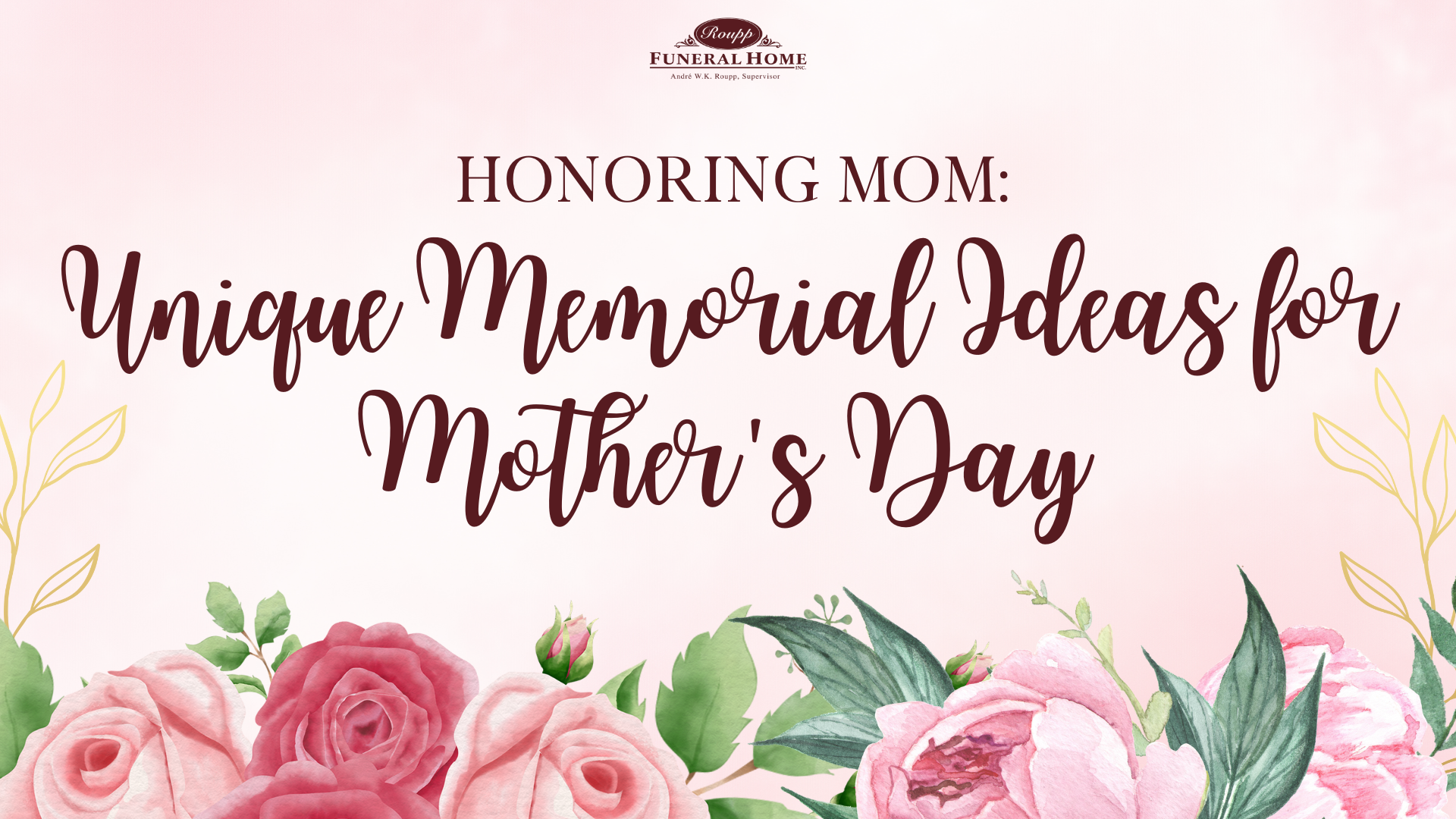
Mother’s Day is a time to celebrate the incredible women who raised us, nurtured us, and shaped our lives. For those who have lost their mother or a maternal figure, the day can bring a complex mix of emotions—love, longing, gratitude, and grief. At Roupp Funeral Home, we understand how important it is to keep memories alive and find meaningful ways to honor the mothers who are no longer with us. While the pain of loss may never completely fade, remembrance can offer comfort, healing, and even moments of joy. If you're searching for a way to feel close to your mom this Mother’s Day, here are some heartfelt and unique ideas to consider. Plant a Memorial Garden or Tree There’s something beautifully symbolic about watching a living thing grow in memory of someone you love. Consider planting a favorite flower, a rose bush, or a tree in her honor. Choose a peaceful spot in your yard or community garden, and add personal touches—a decorative stone, a wind chime, or a small plaque. Over time, this space can become a sacred place to sit, reflect, and remember. Prepare One of Her Signature Dishes Food has a way of connecting us to those we miss. Try recreating one of your mother’s favorite meals or baked goods this Mother’s Day. Use her handwritten recipe if you have it, or cook alongside a loved one who shared those special kitchen memories with her. Set the table with care, light a candle in her memory, and share stories over dinner. It’s a beautiful way to bring her presence into your home. Start a Tradition in Her Name Was your mother passionate about something—a local cause, a hobby, a special activity? Keep her legacy alive by turning that passion into a new tradition. You might: Donate to a charity she supported Volunteer at a place she loved Host a family game night or picnic in her style Write letters of encouragement to other mothers in your community These simple acts help keep her spirit active in the world. Create a Keepsake or Memory Box A personalized keepsake can be a powerful reminder of your mother’s influence. You could design a custom piece of jewelry with her birthstone, frame a favorite photo, or gather special items into a memory box—old letters, fabric from her clothing, jewelry, or other mementos. These tangible pieces of her story can be passed down to future generations, keeping her memory alive for years to come. Visit a Meaningful Place Spending time in a place that held special meaning for your mom—or for the two of you—can bring a deep sense of connection. Whether it's her favorite park, the church she attended, or simply a quiet spot where you used to talk, returning to those places may stir emotions and memories that bring healing. Bring a flower, a small token, or just your thoughts—and allow yourself the space to feel. Write Her a Letter Sometimes, the words left unsaid can linger. Writing a letter to your mom is a deeply personal way to share your thoughts, express your love, or tell her about your life. You can tuck the letter into a keepsake box, bury it near her resting place, or keep it in your journal. It’s not about the response—it’s about the release. You Are Not Alone We know Mother’s Day can be difficult. If you’re struggling this season, please know that you're not alone. Whether you find peace in quiet remembrance or feel comfort in community, your grief is valid and your memories are sacred. Our team at Roupp Funeral Home is here for you—not only during times of loss, but in the moments after, too. We offer ongoing grief support programs like GriefShare , as well as personalized memorial services that help you celebrate a life with meaning. This Mother’s Day, we hope you find a way to honor your mom in a way that feels true to your heart. May her memory continue to inspire love, laughter, and light in your life. If you need support or have questions about planning a memorial, feel free to contact us anytime.
